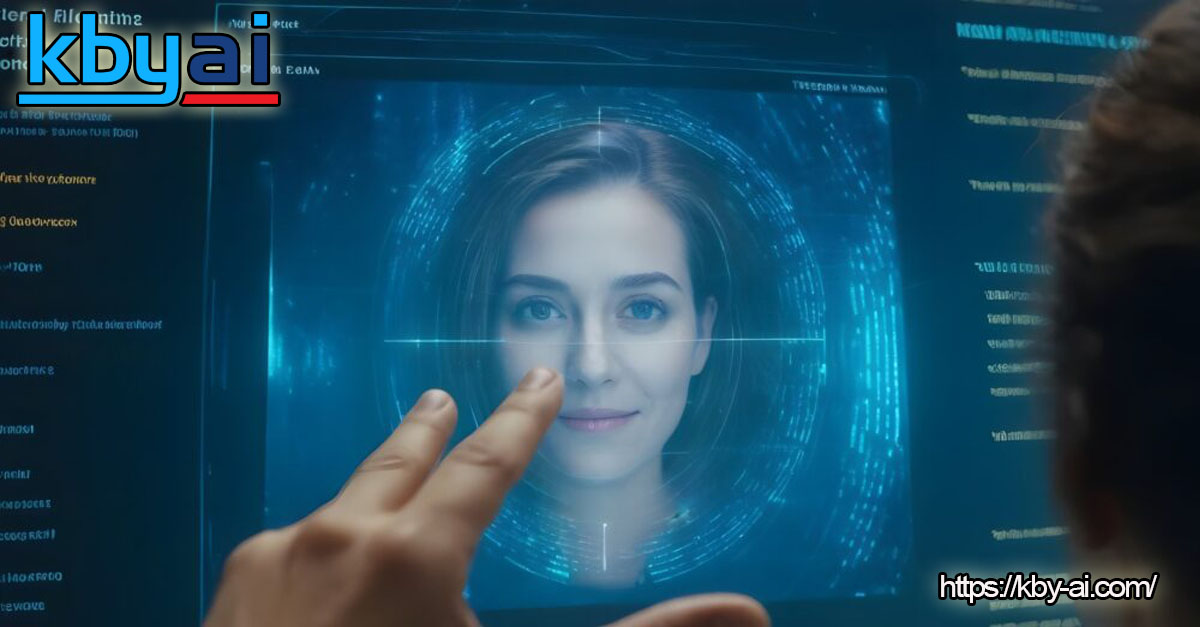Learn how face matching works in ID verification and KYC. Discover its process, types, benefits, and role in preventing identity fraud.
In today’s digital-first economy, businesses must be able to confirm the identity of customers, employees, and travelers quickly and securely. From opening a bank account to passing through an airport eGate, identity verification has become a central part of daily life. Yet even when an identity document such as a passport or driver’s license is authentic, one crucial question remains:
Is the person presenting the document truly its rightful owner?
This is where face matching—sometimes referred to as face verification—comes in. It ensures that the live person in front of the camera is the same individual depicted in the trusted ID. In other words, face matching acts as the bridge that ties biometric traits to already validated identity documents.
In this article, we’ll take a deep dive into:
-
What face matching is and how it works
-
Why it’s essential in identity verification and KYC (Know Your Customer) processes
-
The step-by-step process behind modern technology
-
Different types of face matching deployments in real life
-
Key challenges and accuracy considerations
-
How organizations can use it to build robust identity proofing
What Is Face Matching?
Face matching is the process of comparing two images of a face to determine whether they belong to the same individual. In identity verification, this typically means comparing:
-
A live selfie captured during onboarding, login, or a border control check
against -
The portrait photo stored in a government-issued ID document (such as a passport, driver’s license, or eID card)
Advanced face matching systems may also compare against:
-
A stored biometric template in a database (e.g., for repeat logins or employee access)
-
An RFID chip image in an ePassport, which is often a higher-quality reference
Unlike general face recognition (which is a one-to-many search, e.g., identifying someone in a crowd), face matching is one-to-one verification. The system simply answers: Does this selfie match this ID photo?
Why Face Matching Matters in ID Verification

Identity verification (IDV) systems involve multiple stages, from scanning an ID to checking document authenticity. But even if the document is legitimate, fraud is still possible if someone else is using it. Face matching closes that gap.
-
Prevents impersonation fraud: Without face matching, a stolen passport or driver’s license could be used successfully.
-
Strengthens compliance: Regulations like KYC (Know Your Customer), AML (Anti-Money Laundering), and GDPR require strong identity proofing.
-
Enhances customer trust: People feel safer knowing the system can spot impostors.
-
Supports automation: At airports and banks, face matching allows for faster, contactless processing.
In short, face matching links the human being to their strongest piece of identity evidence—their government-issued ID.
How Face Matching Works: Step-by-Step
Modern face matching uses a blend of computer vision, machine learning, and biometric science. A typical pipeline includes several stages:
1. Capture
The system collects a live selfie or short video from a user’s mobile phone, laptop, or kiosk. For ePassports and eIDs, it may also extract one or more portraits from the embedded RFID chip.
2. Image Quality Checks
Before analysis, the software evaluates whether the captured selfie is usable. It checks for:
-
Proper lighting and exposure
-
Sharpness and resolution
-
Frontal pose with both eyes visible
-
Absence of occlusions (e.g., hats, sunglasses, masks)
If quality is insufficient, the user may be prompted to try again.
3. Liveness Detection (PAD – Presentation Attack Detection)
To prevent spoofing, the system verifies that the input is from a real, live human. Common attacks include printed photos, digital screen replays, or silicone masks. Advanced solutions use:
-
Passive liveness (analyzing subtle natural signals like skin texture and eye reflections)
-
Active liveness (asking users to blink, turn their head, or follow an animation)
4. Feature Extraction in Face Matching
Once verified as live, the system passes the face through a deep neural network. This produces a mathematical representation known as an embedding or template—a string of numbers encoding facial features such as:
-
Distances between landmarks (eyes, nose, mouth)
-
Shape of contours (jawline, cheekbones)
-
Texture patterns (skin and hair distribution)
5. Comparison(Face Matching)
The embedding from the selfie is compared to the embedding from the ID portrait. The system calculates a similarity score. If the score exceeds a pre-set threshold, the result is a match.
6. Decision & Outcome
-
If the score is high → The user is verified.
-
If the score is low → The user may be prompted to retry or sent to manual review.
-
If spoofing is suspected → The attempt is blocked.
This process, when combined with document validation, creates a secure digital identity verification session.
Thresholds: Balancing Security and Usability
One of the most important factors in face matching is the similarity threshold:
-
A low threshold increases convenience but may let impostors slip through (false accepts).
-
A high threshold reduces fraud but risks rejecting legitimate users (false rejects).
The right balance depends on context:
-
Banking and fintech may demand stricter thresholds.
-
E-commerce or ride-sharing apps may choose a more user-friendly balance.
Industry standards such as NIST SP 800-63A-4 provide guidance on selecting assurance levels.
Challenges in Face Matching Accuracy
Despite its power, face matching must overcome several challenges:
-
Lighting and camera quality: Poor webcams or backlighting reduce accuracy.
-
Pose variation: Looking away or tilting the head can distort results.
-
Aging: Faces naturally change over time, requiring adaptive models.
-
Demographic balance: Systems must perform fairly across skin tones, genders, and ages to avoid bias.
That’s why robust solutions don’t just compare images—they also guide the user into a workable pose, ensure proper conditions, and adjust dynamically.
Face Matching in a Full Identity Verification Flow
Face matching rarely operates alone. In most ID verification (IDV) pipelines, it is preceded and supported by document validation.
-
Document Scanning: The system captures images of the ID document.
-
Document Analysis: It checks for authenticity features like holograms, watermarks, OVIs (optically variable inks), and MLIs (multiple laser images).
-
Data Extraction: Key information (name, birthdate, document number) is pulled from data fields.
-
Cross-Validation: Information is checked for consistency across fields.
-
Chip Reading (for ePassports/eIDs): The RFID chip is read to retrieve a high-quality portrait and cryptographic security data.
-
Face Matching: The selfie is compared to one or more ID portraits.
By layering checks, fraudsters have fewer opportunities to exploit weaknesses.
Types of Face Matching Deployments
Face matching appears in several real-world scenarios. Here are the most common types:
1. Document-to-Selfie (KYC & Onboarding)
The most common use case. A user takes a selfie, which is matched to their passport or ID portrait. Widely used in:
-
Banking & fintech onboarding
-
SIM card registration
-
Ride-hailing or gig economy platforms
-
Automated border control gates
2. In-Document Portrait Cross-Checks
Many IDs contain multiple images:
-
Visual zone photo
-
RFID chip portrait
-
Ghost image or hologram
By comparing these internally, systems can detect tampering before even analyzing the live selfie.
3. Live-to-Chip at eGates (Airports)
Airports use kiosks and eGates to match live captures with chip portraits. In some programs, travelers pre-submit a selfie remotely, enabling contactless boarding.
4. Employee & Access Management
Organizations use face matching for secure logins or to control access to restricted areas. Unlike broad face recognition, this one-to-one check is privacy-friendly.
Benefits of Face Matching for Organizations
Adopting strong technology brings measurable advantages:
-
Fraud Prevention: Blocks stolen ID misuse.
-
Faster Onboarding: Automates KYC steps for smoother customer journeys.
-
Regulatory Compliance: Supports AML, KYC, and identity assurance frameworks.
-
Scalability: Handles millions of verifications across geographies.
-
Customer Trust: Builds confidence in digital services.
The Future of Face Matching
As AI models and camera hardware improve, it will become:
-
More accurate across demographics (reducing bias concerns).
-
Faster and lighter, enabling instant results on mobile devices.
-
More integrated with multi-factor systems, combining biometrics with behavioral signals, device intelligence, and risk scoring.
-
Privacy-preserving, using techniques like federated learning and on-device processing to keep data safe.
With global reliance on digital transactions growing, face matching is set to be a cornerstone of identity verification for years to come.
Final Word on Face Matching
Face matching is far more than a technical step in ID verification—it is the critical safeguard that ties a live person to an authenticated identity document. Without it, even the strongest document checks can leave systems vulnerable to impersonation fraud.
When paired with liveness detection and document authenticity checks, it enables robust, scalable, and regulation-compliant identity proofing. From remote banking to airport security, it is the invisible technology that keeps digital trust intact.
Frequently Asked Questions (FAQ)
1. What is the difference between face matching and face recognition?
Face verification is a one-to-one comparison between two images—usually a live selfie and an ID photo—to confirm identity. Face recognition, by contrast, is one-to-many, searching a database to identify a person in a crowd or list.
2. How accurate is face matching technology?
Modern systems achieve very high accuracy rates, often above 99% under good conditions. Accuracy depends on factors like image quality, threshold settings, demographic fairness of the algorithm, and whether liveness detection is used.
3. Why is liveness detection important in face matching?
Liveness detection prevents presentation attacks such as printed photos, masks, or video replays. Without it, fraudsters could trick the system with fake images. Together, those provide strong protection against identity theft.
4. Where is face matching used in real life?
It is widely used in online banking, fintech apps, telecom SIM registration, ride-sharing platforms, government eID programs, and at airports through automated eGates. It ensures that only legitimate users can pass identity checks.
5. Does face matching comply with data privacy regulations?
Yes, when implemented correctly. Leading providers follow GDPR, CCPA, and other regulations, ensuring biometric templates are encrypted, processed securely, and stored only when necessary. Many solutions also use on-device processing for privacy protection.
Conclusion
Face matching is one of the most important technologies in modern identity verification. It ensures that the individual standing in front of a camera is truly the owner of the document being presented. By linking a live selfie with a trusted ID photo, it blocks impersonation attempts, strengthens KYC and AML compliance, and helps organizations build customer trust.
As fraud tactics evolve—from document forgery to deepfake attacks—face matching combined with liveness detection and document authentication provides a strong defense. Whether at a bank, telecom operator, online marketplace, or international airport, this technology makes digital identity proofing faster, more reliable, and more secure.
Looking ahead, advances in AI, edge processing, and privacy-preserving biometrics will make it even more accurate, fair, and accessible. For any business that relies on remote onboarding or secure transactions, implementing robust face matching is not just an option—it is a necessity for staying ahead of fraud and ensuring regulatory compliance.


